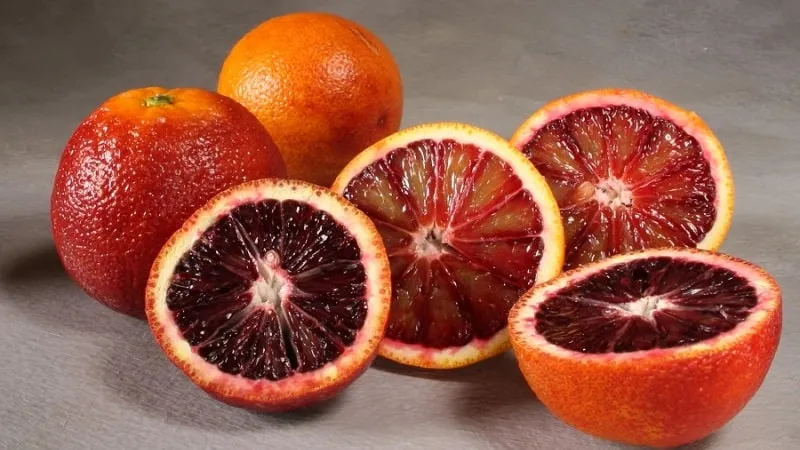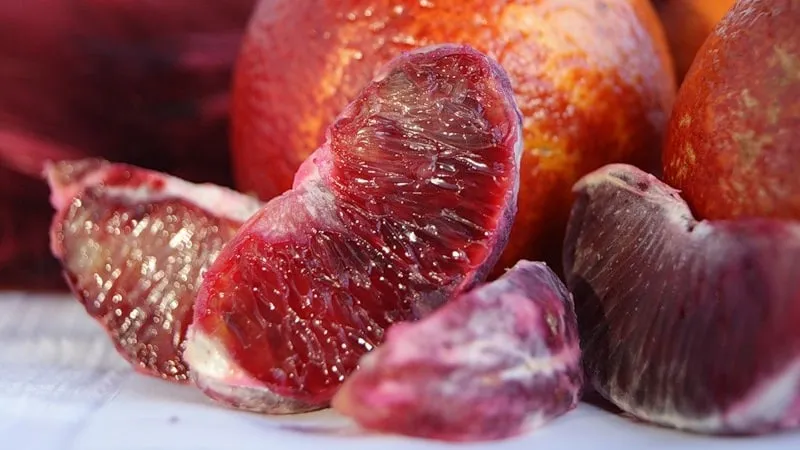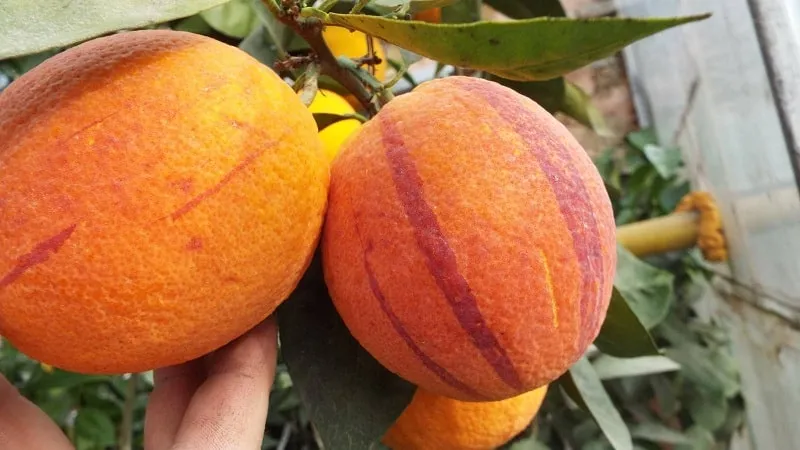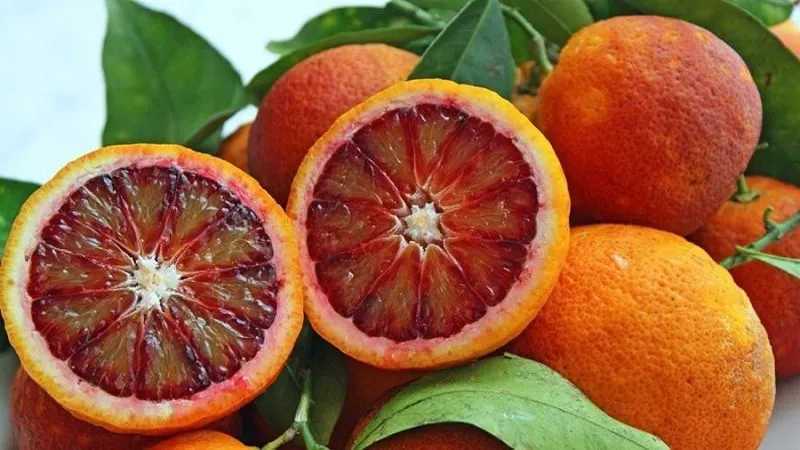Blood orange, red orange, pigmented orange, Sicilian orange, king orange — all these names refer to a citrus fruit with ruby-red or orange-red flesh. The Tarocco, Moro, and Sanguinello varieties are popular in Europe and the USA. These unique fruits are loved for their vibrant aroma, juiciness, and sweet taste with a hint of tartness. Let’s explore the different types of blood oranges, their names, and where they are grown.
Table of contents
Why Do Some Oranges Have Red Veins Inside?
We are accustomed to seeing standard orange-colored fruits with bright yellow or orange flesh on store shelves, but sometimes beneath the peel lies flesh with red streaks.
This is not a product of genetic engineering but simply a variety of orange. In many regions, such fruits are rare, sparking curiosity and many questions.

The red color of the flesh comes from anthocyanins — pigments with antioxidant properties, which are found in most red fruits and berries but are rare in citrus fruits. It is precisely because of anthocyanins that these citrus fruits are highly valued worldwide. The intensity of the color depends on sunlight, temperature in the growing region, and the variety.
Note. Anthocyanins slow down the aging process in the body and protect cells from oxidative damage.
The key condition for anthocyanin production is cool nighttime temperatures contrasting with daytime warmth. Such sharp fluctuations are typical of the homeland of ruby oranges — Sicily. The pigments accumulate during the formation of the fruit. In autumn and winter, this process becomes more active. The fruits continue to develop their red hue even after harvesting, especially when stored in a dark, cool place.
What Is the Name of the Orange with Red Flesh?
The red, or pink, citrus appeared as a result of a natural mutation of the common orange, which itself originated from the cross-pollination of mandarin and pomelo. Such mutations were first discovered on the island of Sicily, leading to the fruit’s alternative name — Sicilian orange. This variety is also known as blood orange or king orange.
Note. Spain cultivates 35 million orange trees, but Brazil leads globally, producing around 18 tons of fruit annually.
Historical sources suggest that oranges arrived in Europe from China. At the same time, ancient Greek mythology speaks of the Hesperides, who grew golden apples of immortality in their garden. Greeks firmly believe these were oranges, as in Ancient Greece, citrus fruits were called "hesperidia," and later "portokali" due to their orange-colored peel (the Greek word for "orange" is "portokali").

Where Are Blood Oranges Grown?
Plantations are located in Spain, China, Morocco, the USA (California and Florida), Greece, and Italy.
It is said that the most delicious king oranges are grown in Malta, but Sicilian soil is the most favorable for cultivating this citrus variety. The island is home to Mount Etna, which periodically releases mineral-rich ash. Although Etna is an active volcano, its slopes are densely populated, and locals consider the land exceptionally fertile.
Blood oranges also grow in Albania, Turkey, and Georgia. In some European countries, they are cultivated in greenhouses.
What Do They Taste Like?
Blood oranges are renowned for their tender, juicy, and sweet flesh with a subtle tartness. The flavor combines classic orange notes with a hint of raspberry.
Popular Varieties
Three main varieties are available: Tarocco, Moro, and Sanguinello. Each is unique.
Tarocco originates from Italy. It is believed the name comes from the exclamation of an amazed farmer who first discovered this variety. Tarocco is highly popular in Italy.

The fruit has thin orange skin with a faint red hue. This is the sweetest blood orange variety, with minimal seeds. The fruits are round and medium-sized. The flesh is juicy, reddish-orange, with a sweet-tart flavor and berry-like aroma. The variety’s historical origin lies at the foot of Mount Etna, where the fertile soil gives Tarocco its distinctive taste. These oranges contain more vitamin C than other citrus fruits.
Note. Biologists suggest it originated from a mutation of Sanguinello, sometimes called a "half-blood" due to its less intense red pigmentation compared to Sanguinello and Moro.
Sanguinello is an ancient Spanish variety of blood orange. The fruits are elongated, with orange skin and red speckles. This late-ripening variety is harvested at the end of March. The flesh ranges from dark orange with bright red streaks to deep purple-black, and the fruit contains few seeds.

Moro is a newer variety that appeared in the 19th century in Sicily. The fruit is oval, with orange skin and a wine-colored blush. The diameter is 5–8 cm, and the weight is 150–180 g. The flesh is juicy, burgundy-red, almost seedless, and if seeds are present, they are small and soft. The taste is sweet and rich, with raspberry notes, and the aroma is strong and distinctive.

Conclusion
Blood oranges are highly popular in Europe and the USA, while in many other regions, standard orange citrus fruits dominate the shelves. However, in recent years, king oranges — with their ruby-red or orange-red flesh — have become more widely available. They are much sweeter and more aromatic than regular oranges, with a hint of raspberry in their flavor.
The most famous varieties are Moro, Tarocco, and Sanguinello, which differ slightly in size, shape, and flesh color. Sanguinello has the most intense hue, Tarocco is rich in vitamin C, and Moro is the smallest and sweetest of the three.







